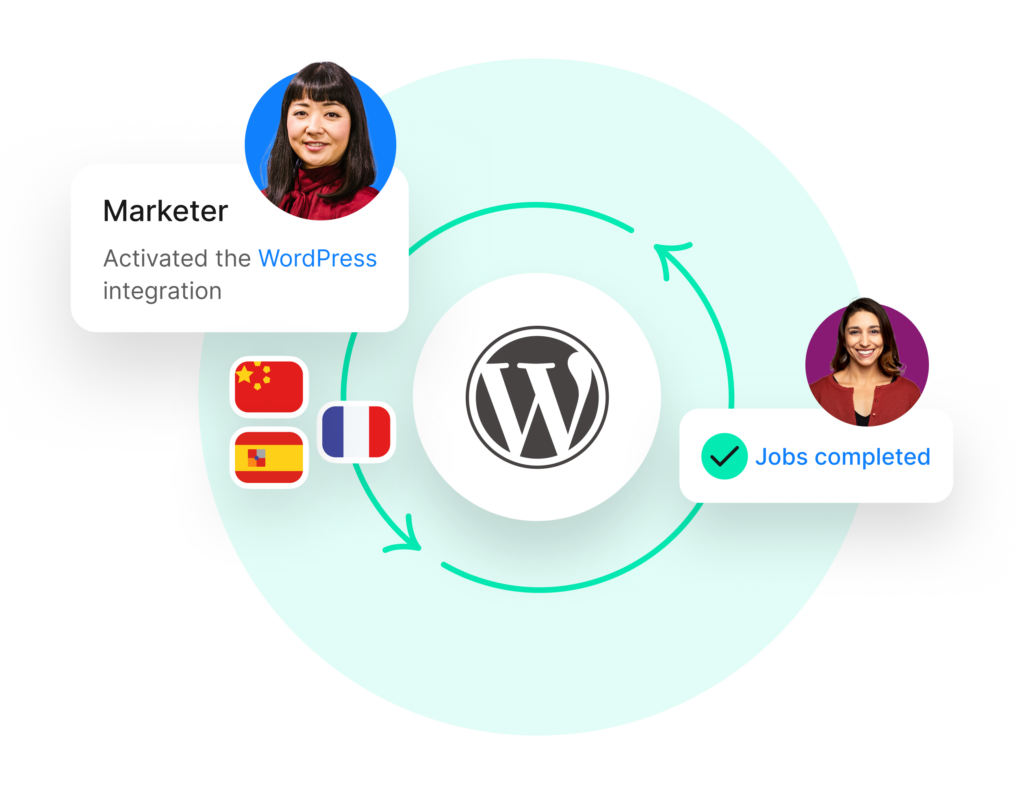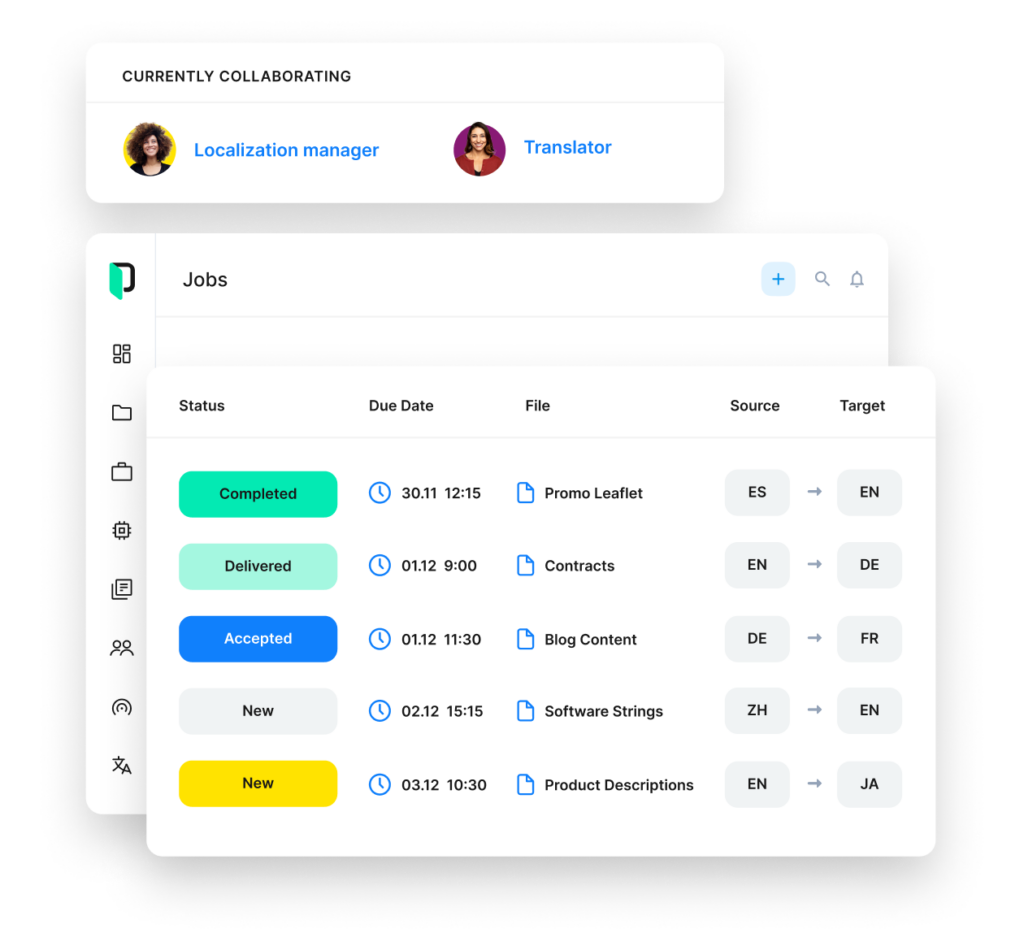Well-researched and targeted website content can act as the driving force behind any brand’s global expansion efforts. It helps attract, engage, educate, and convert new customers, building lasting connections and fuelling business growth.
This is relatively straightforward when you’re communicating in one language—but what if your global content strategy spans across many countries or your audience speaks several languages? What if you want to have a fully global reach?
In this guide, we’ll discuss why WordPress is the preferred CMS for multilingual websites in this guide. You’ll also learn more about the benefits of WordPress content translation and how to streamline the process, allowing you more time to focus on your global marketing strategy.
Are you missing (billions of) opportunities?
English may have become the default language for online communication, but did you know that only 25.9% of internet users speak English as their first language? At the same time, internet usage is skyrocketing in parts of the world where English isn’t spoken at all. If your WordPress site is only available in English—or only translated into English—billions of people aren’t able to consume your content or engage with your product. As a consequence, you could be missing out on billions of potential new customers.
Why WordPress is the preferred CMS for multilingual websites
Whether you already have a multilingual content marketing strategy, or have decided to take that step, a content management system that supports multiple languages is a must—and WordPress is the most widely-used CMS by a long shot. As a free, open source CMS, it’s used in more than 178 countries, available in 57 different languages, and, according to Hosting Tribunal, powers the content delivery on almost 64.1% of all CMS-built websites.
Why do publishers and marketers love WordPress so much? Not only is it easy to use, it’s also flexible and versatile, with over 50K plugins available to enhance your WordPress website and adapt it to your needs. This makes it an ideal choice for big-name brands, small businesses, and individual bloggers alike. To start managing your WordPress site content in different languages, you’ll need a dedicated WordPress translation plugin.

Boost website reach with a robust WordPress translation plugin
Translate your website, blog, or landing pages into multiple languages, engaging international audiences with content that truly resonates.
The benefits of WordPress content translation
Before we delve into how a translation plugin for WordPress can streamline the delivery of multilingual content to different target markets, let’s take a moment to reflect on why it offers so many great opportunities.
Expand your audience
If your business is online, you have the potential to reach a global market. That market is continuing to grow—as of April 2022, there were 5B internet users worldwide, rising from 2B in 2010. You may not be looking for world domination, but even small businesses can benefit from exploring untapped potential. You may find there’s demand for your products or services in locations, or among audiences, you may not have even considered. However, you’re unlikely to reach them if you can’t engage with them through your content.
Get ahead of your competition
If you’re only sharing content in English-speaking or developed countries, it’s likely you’re facing tough competition in saturated markets. By translating your WordPress content, you can make your mark early in emerging markets, giving you an advantage over competitors who aren’t as quick to make a move.
Improve your SEO
A bonus of ensuring your WordPress site is multilingual is that it can improve its multilingual SEO (search engine optimization). Which, in turn, can help you attract more traffic. This is because Google indexes the translated versions of your WordPress site independently but includes the traffic for all of them when calculating your site’s overall ranking. To benefit from this, you need to use a different URL for each language version, but this can be as simple as adding a short country code to your main URL. For more guidance, see Google’s guide to managing multi-regional and multilingual sites.
Capture and keep attention
Attracting more traffic to your site is one thing, but you need to capture and maintain people’s attention when they arrive. And, as attention spans are shortening more than ever, this job is becoming increasingly more difficult. By providing content in a person’s native language, you stand a much better chance of engaging them and keeping them interested.
Increase conversions and sales
There’s a big difference between providing content that people can understand and content that feels natural to a native speaker. This difference can affect trust, likeability, and, ultimately, the decision to buy—or not. Around 40% of people, for example, won’t buy from websites in another language. Translating and localizing your WordPress content can help you to build trust and loyalty by improving your connection with people and engaging them on a more personal level. This then gives you a greater influence over their attitudes, decisions, and behaviors—including whether or not to buy from you.
How to translate WordPress content more quickly and with the highest quality
We’ve established that translating your WordPress content is critical for international growth—but how do you get the job done? If you were to tackle it yourself, manually, it would be a big, time-consuming, and complex task. One that may even involve rebuilding your website in one of the WordPress themes that supports different languages and creating new WordPress templates with a multilingual integration. Not to mention coding for each new language. Finally, there’s the translation itself and maintaining all your language files.
Using a translation management system is the way forward
The good news is you don’t need to do it all by yourself—and it doesn’t have to be expensive. Connecting your WordPress site to a translation management system (TMS) via a dedicated plugin will help you streamline multilingual content management from start to finish. Doing this will increase efficiency and productivity—resulting in time and money saved.
A TMS is a centralized platform that allows you to collaborate easily and efficiently with your global marketing team, as well as other departments, translation vendors, and freelancers.
There are various WordPress plugins and themes that work with TMS systems that help you automate the whole process. This includes translating your entire site—not just your blog posts and pages but categories, tags, and custom post types as well. Once you’ve connected your site to your TMS, you’ll have more time to focus on content creation and other aspects of your role, rather than managing the translation process.
Here are some of the key ways that connecting your WordPress site to a TMS will help you create and manage your multilingual content.
Create efficient translation workflows with smart automation
Want to supercharge your translation workflow to increase efficiency and reduce costs? You can rely on out-of-the-box TMS integrations to do the heavy lifting by automating your translations and localizations end to end.
Not only can you connect to WordPress and other content management systems, but a TMS can also integrate with marketing automation software, ecommerce platforms, and source code repositories. For inspiration, see our guide to automating website localization.
Deliver top-quality content with translation memory
All your translations are automatically stored in your translation memory, which recognizes full and partial sentences. So, if the same words and phrases are used in future items to be translated, the previous translations are shown as recommendations.
This prevents time and money from being wasted by translating the same content twice. Not only does it improve efficiency but also quality as it means approved translations can be reused. Finally, it gives translators more time to focus on ensuring the translation feels natural.
Ensure consistency with term bases
Term base is short for terminology database and is often referred to as a glossary. It works hand in hand with your translation memory to improve the consistency of your translations. It’s particularly useful for words or phrases that are specific to your industry or organization, such as technical terms or buzzwords. It ensures that the same versions are used across your marketing collateral and channels.
Your term base also helps to overcome the issue of a word or term having multiple meanings in another language. If any term needs updating, the new term can be applied immediately to current projects and is ready for use on future projects.
Speed up the translation process with machine translation
Depending on the strategy that is suitable for your content, you can consider using machine translation (MT), or a combination of both human translation and MT post-editing. Many translation management systems provide access to a variety of MT engines such as Google Translate or Microsoft Translator. By integrating MT into your translation workflow, you can leverage the MT results to increase efficiency and create scalable translation processes, without compromising on quality.

Phrase TMS
The enterprise-ready translation management system
Work with the leading TMS to automate translation workflows with cost control and quality checks.




